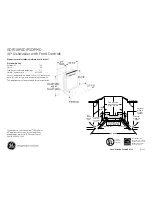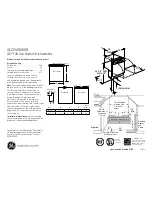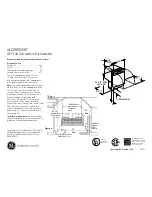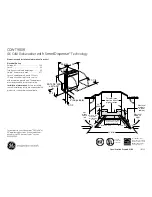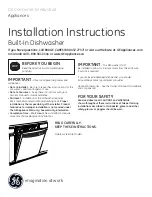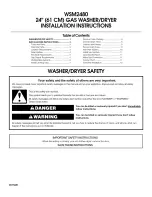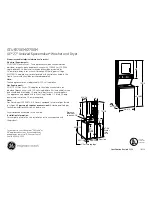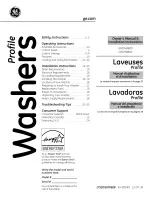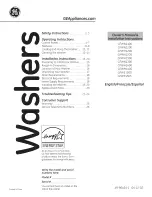
INSTALLATION
REV.0.01_COD.650184_A4
Page 17
3.
INSTALLATION
3.1
Water connection
Water quality
The quality of the water used in all the cleaning stages is essential in achieving good results.
The water must be compatible with the material from which the machine is made.
The water must be compatible with process chemicals.
The water must be compatible with process requirements for the various stages of the
process.
In order to achieve good reprocessing results, the machine requires a supply of soft water with a
low calcium content. Hard water results in the build-up of calcium deposits on the wash items and
on the inner walls of the wash cabinet.
Water with a hardness level higher than 0.7 mmol/l (4 gr/gal) must be softened. This occurs
automatically during a program sequence on machines with a built-in water softener (option ex
works). The water softener must be set to the exact hardness of the water.
The water softener must be reactivated at regular intervals. This requires the use of special
reactivation salt. Reactivation is carried out automatically during a program sequence.
Softened water must be provided on site for machines without a built-in water softener.
Note: The water hardness is set by Miele Service.
WARNING
Water from the cabinet is not suitable for drinking!
The machine must be connected to the water supply in strict accordance with local regulations.
The water used must at least comply with national regulations for drinking water quality. If the
water supply has a high iron content, there is a danger of corrosion occurring on items being
cleaned in the laboratory glassware washer, as well as the machine itself. If the chloride content of
the water exceeds 100 mg/l, the risk of corrosion to wash items in the machine will be further
increased.
In certain regions (e.g., mountainous areas), the water composition may cause precipitates to
form, requiring the use of softened water in the steam condenser.
The machine is equipped with a safety system for the protection of drinking water and may be
connected to the water supply without a non-return valve, if national regulations permit.
The laboratory glassware washer is supplied as standard for connection to cold water (blue coded
hose) and hot water up to max. 60°C (140°F) (red coded hose). Connect the intake hoses to the
shutoff valves for cold and hot water.
If no hot water supply is available, the
red
coded inlet hose for the hot water connection must also
be connected to the cold water supply.
The
minimum flow pressure
for cold water, hot water, and the DI water supply is 100 kPa (14.5
psi).
The
recommended flow pressure
is ≥ 200 kPa (29 psi) for the cold and hot water connections
and ≥ 200 kPa (29 psi) for the DI water supply in order to avoid excessively long water intake
times.
The
maximum permissible static water pressure
is 800 kPa (116 psi).































